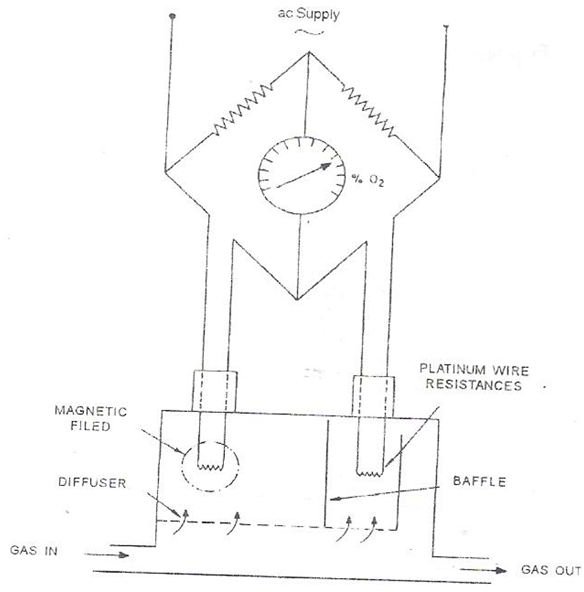Oxygen Analyzer hand held used on ships
Introduction
There are various types of measuring instruments used on board ships for measuring different parameters such as salinity, ionic purity, pH, speed or depth. An oxygen analyzer is another such important equipment. Many times it is necessary to measure the oxygen content especially during situations of enclosed space entries and tank entry. It is advisable as well as mandatory to follow such procedures for the sake of safety of the human beings which enter these spaces. Oxygen content also needs to be noted during inert gas operations on tankers as well. In this article we will learn about the basic operating principle of a hand held oxygen analyzer.
Oxygen Analyzer
These analyzers come in various makes and models and we will be studying about one such analyzer namely the continuous reading type analyzer. The underlying theory behind the working of this type of oxygen meter is as follows.
The main property of oxygen which helps in its detection and measurement of its percentage in the given sample of air is that of Para-magnetism. Basically this means that oxygen gets attracted towards a magnetic field. The set up for measuring oxygen content using this property can be understood from the image shown below.
As you can see in the sketch there are two platinum resistance wires which are exposed to two different chambers. In the first chamber there is the air in which the oxygen content needs to be monitored plus there is an artificially created magnetic field, while the second chamber there is the same air but there is no magnetic field present in this chamber. The wires form a part of the Wheatstone bridge circuit and if you remember from your study of physics, the Wheatstone bridge is used to measure an unknown resistance by obtaining a balance between two legs of the circuit.
The air whose content has to be noted is supplied at one end and is filtered by passing it through a diffuser and goes on to the two chambers as shown in the picture. Hence while one chamber of the meter attracts oxygen the reference chamber attracts only air. This causes a difference in the temperature of the two wire sets because of the difference in thermal conductivity of oxygen with respect to air. This causes imbalance in the resistance of the bridge legs and the degree of this imbalance is in proportion to the oxygen content in the sample to be measured.
Last but not least there is a meter which is calibrate to show this difference in resistance as a percentage of the oxygen in the given sample, thus allowing the ship staff to note the oxygen content in the given space.
Image Credit
Circuit of Oxygen Analyzer - Automation & Control Systems for Marine Engineers by Gokhale and Nanda
